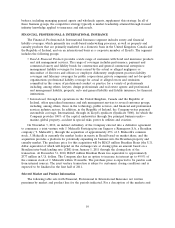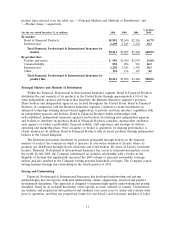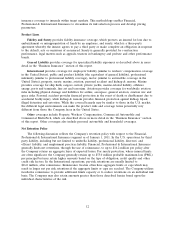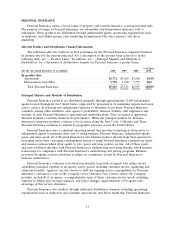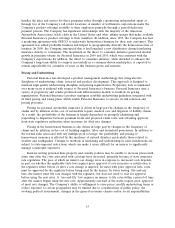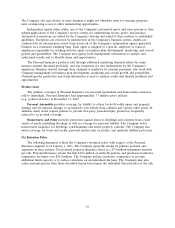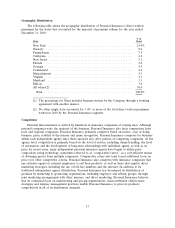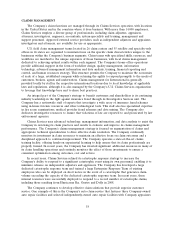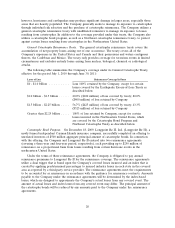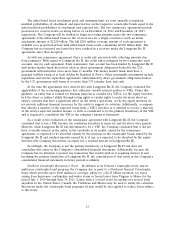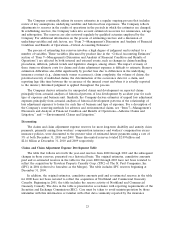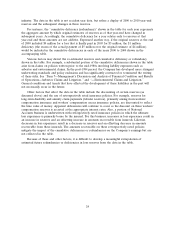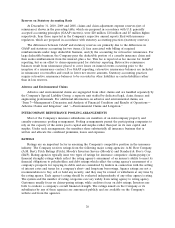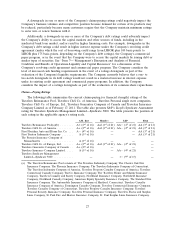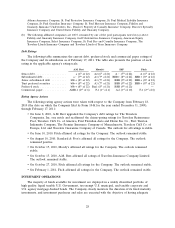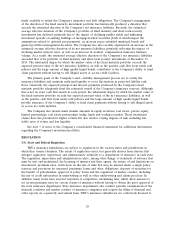Travelers 2010 Annual Report Download - page 31
Download and view the complete annual report
Please find page 31 of the 2010 Travelers annual report below. You can navigate through the pages in the report by either clicking on the pages listed below, or by using the keyword search tool below to find specific information within the annual report.on site to complete an estimate, handle all rental arrangements and monitor the repair process from
start to finish. By managing the claims in this way, the Company can help ensure prompt, quality
results and create a differentiated, superior claim experience for customers.
Another strategic advantage is TravCompSM, a workers’ compensation claim resolution and medical
management program that assists adjusters in the prompt investigation and effective management of
workers’ compensation claims. Innovative medical and claims management technologies permit nurse,
medical and claims professionals to share appropriate vital information that supports prompt
investigation, effective return to work and claim resolution strategies. These technologies, together with
effective matching of professional skills and authority to specific claim issues, have resulted in more
efficient management of workers’ compensation claims.
REINSURANCE
The Company reinsures a portion of the risks it underwrites in order to control its exposure to
losses. The Company cedes to reinsurers a portion of these risks and pays premiums based upon the
risk and exposure of the policies subject to such reinsurance. Ceded reinsurance involves credit risk,
except with regard to mandatory pools, and is generally subject to aggregate loss limits. Although the
reinsurer is liable to the Company to the extent of the reinsurance ceded, the Company remains liable
as the direct insurer on all risks reinsured. Reinsurance recoverables are reported after reductions for
known insolvencies and after allowances for uncollectible amounts. The Company also holds collateral,
including trust agreements, escrow funds and letters of credit, under certain reinsurance agreements.
The Company monitors the financial condition of reinsurers on an ongoing basis and reviews its
reinsurance arrangements periodically. Reinsurers are selected based on their financial condition,
business practices, the price of their product offerings and the value of collateral provided. After
reinsurance is purchased, the Company has limited ability to manage the credit risk to a reinsurer. In
addition, in a number of jurisdictions, particularly the European Union and the United Kingdom, a
reinsurer is permitted to transfer a reinsurance arrangement to another reinsurer, which may be less
creditworthy, without a counterparty’s consent, provided that the transfer has been approved by the
applicable regulatory and/or court authority. For additional information concerning reinsurance, see
note 5 of notes to the Company’s consolidated financial statements and ‘‘Item 1A—Risk Factors.’’
The Company utilizes a variety of reinsurance agreements to manage its exposure to large property
and casualty losses, including:
• facultative reinsurance, in which reinsurance is provided for all or a portion of the insurance
provided by a single policy and each policy reinsured is separately negotiated;
• treaty reinsurance, in which reinsurance is provided for a specified type or category of risks; and
• catastrophe reinsurance, in which the Company is indemnified for an amount of loss in excess of
a specified retention with respect to losses resulting from a catastrophic event.
For a description of reinsurance-related litigation, see note 15 of notes to the Company’s
consolidated financial statements.
Catastrophe Reinsurance
Catastrophes can be caused by a variety of events, including, among others, hurricanes and other
windstorms, earthquakes, hail, wildfires, severe winter weather, floods and volcanic eruptions.
Catastrophes can also result from a terrorist attack (including those involving nuclear, biological,
chemical or radiological events), explosions, infrastructure failures or as a consequence of political
instability. The incidence and severity of catastrophes are inherently unpredictable. The extent of losses
from a catastrophe is a function of both the total amount of insured exposure in the area affected by
the event and the severity of the event. Most catastrophes are restricted to small geographic areas;
19



